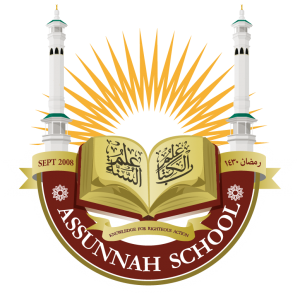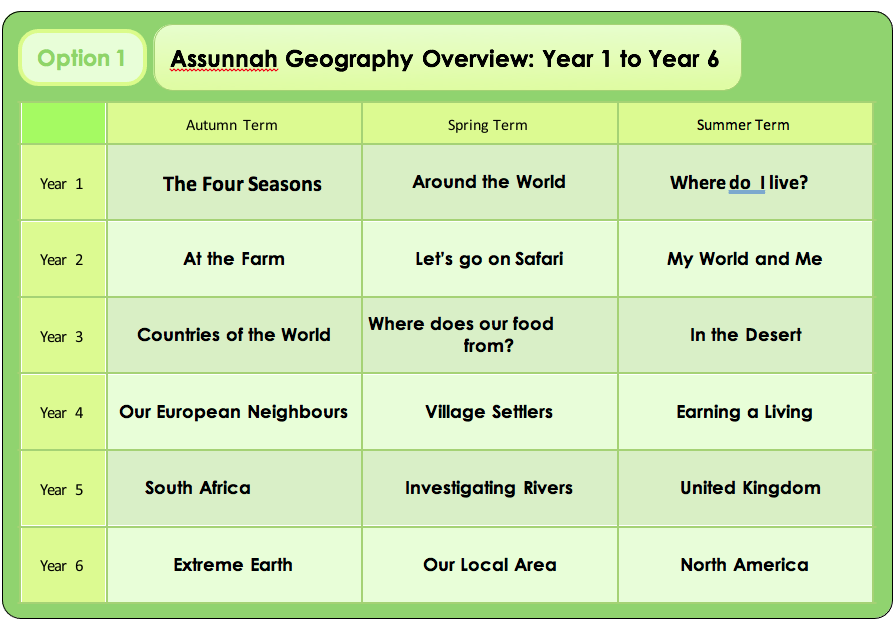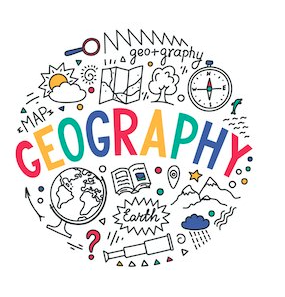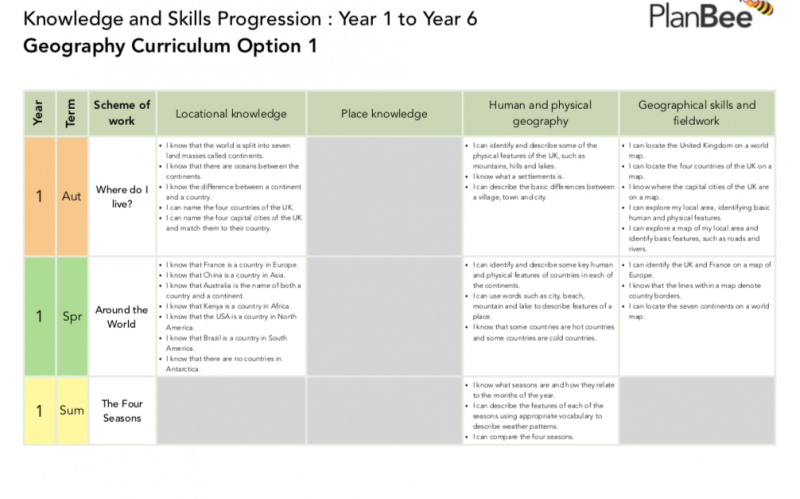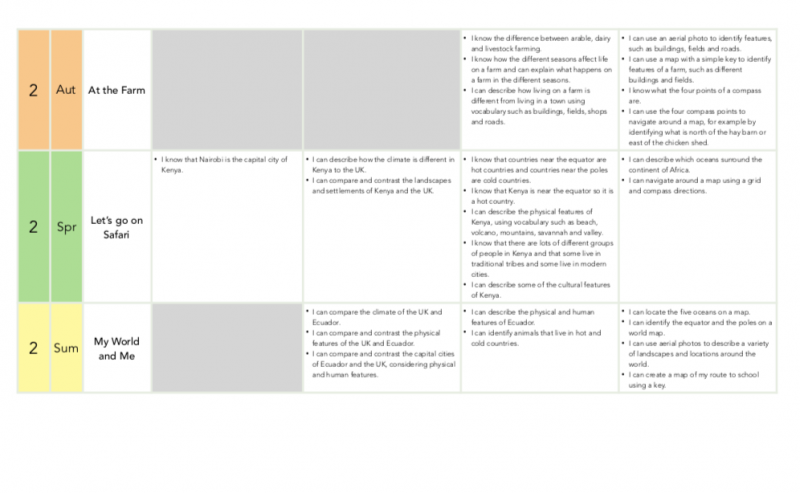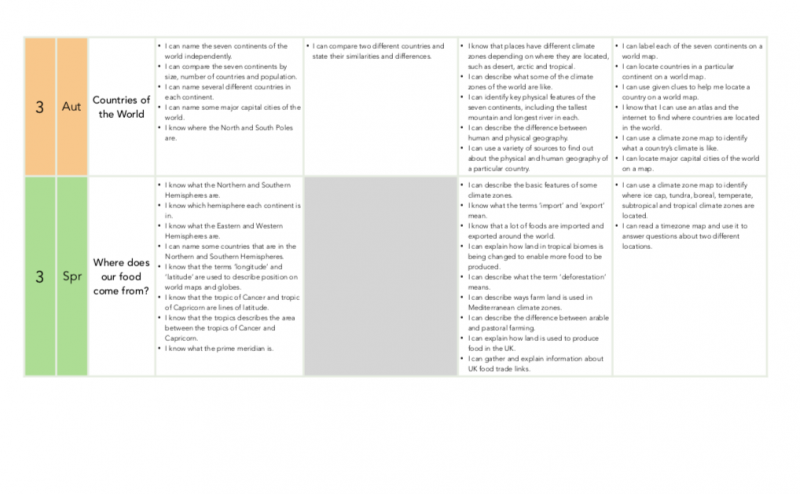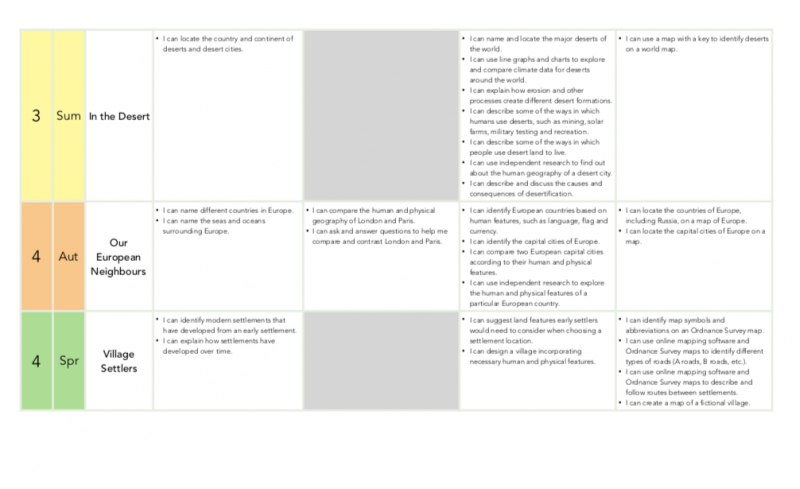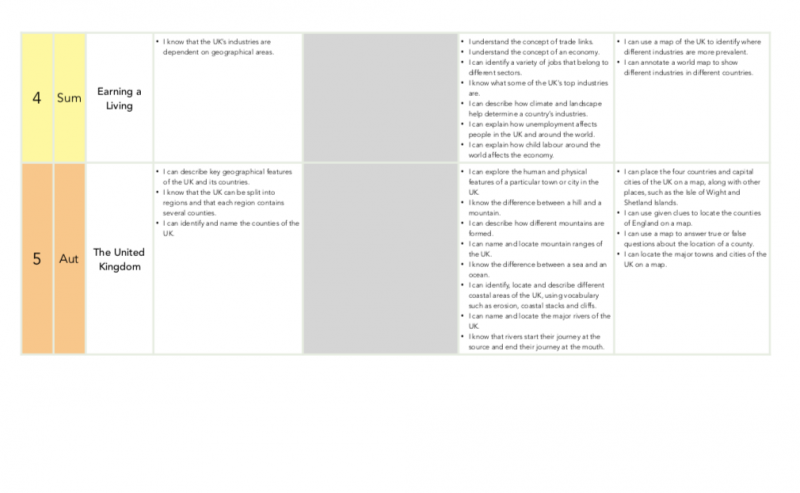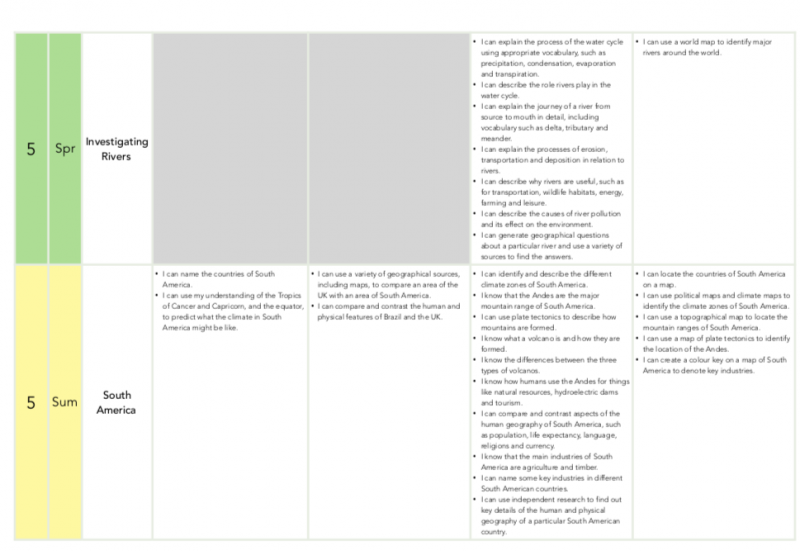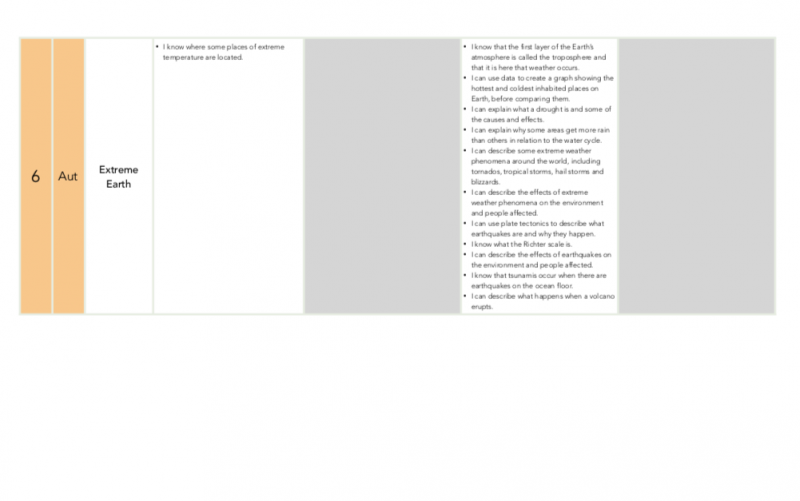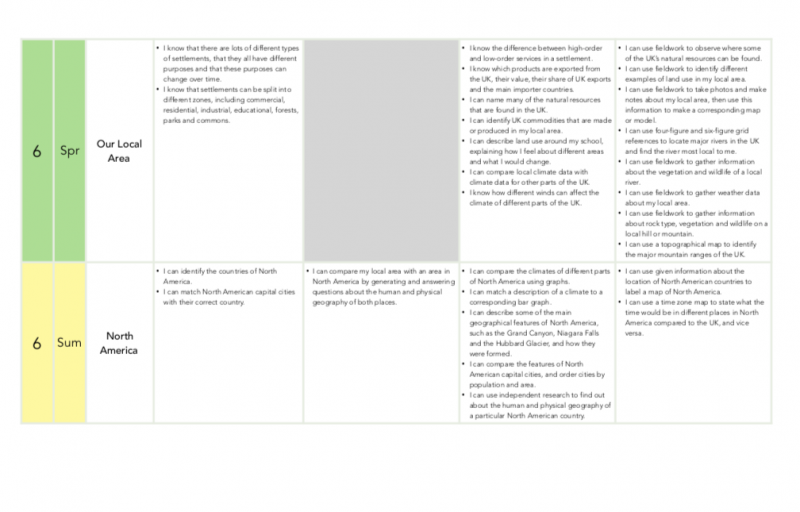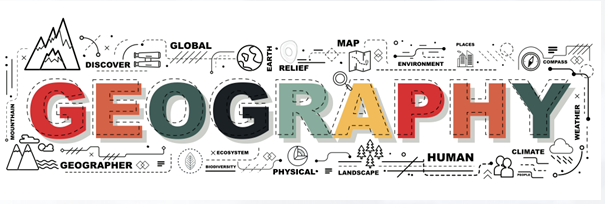
Geography Policy
Contents
- Subject Statement
- Teaching and Learning
- Assessment
- Planning and Resources
- Organisation
- EYFS
- KS1 and KS2
- Equal Opportunities
- Inclusion
- Parents
- Curriculum Statement – Geography
Intent
At Assunnah Primary, we believe that Geography helps to provoke and provide answers to questions about the natural and human aspects of the world. Children are encouraged to develop a greater understanding and knowledge of the world, as well as their place in it. The geography curriculum at Assunnah enables children to develop knowledge and skills that are transferable to other curriculum areas and which can and are used to promote their spiritual, moral, social and cultural development. Geography is, by nature, an investigative subject, which develops an understanding of concepts, knowledge and skills.
The curriculum is designed to ensure that teaching equips pupils with knowledge about diverse places, people, resources and natural and human environments, together with a deep understanding of the Earth’s key physical and human processes. As pupils progress through the school, their growing knowledge about the world helps them to deepen their understanding of the interaction between physical and human processes, and of the formation and use of landscapes and environments. Geographical knowledge and skills are progressive and are sequenced to provide the framework and approaches that provide explanation of how the Earth’s features at different scales are shaped, interconnected and change over time.
We seek to inspire in children a curiosity and fascination about the world and its people which will remain with them for the rest of their lives, equipping them well for further education and beyond.
Implementation
Geography at Assunnah is taught in blocks throughout the year, so children can achieve depth in their learning and commercially produced Plan bee Resources are used. Teachers have identified the key knowledge and skills of each blocked topic and these are mapped across the school, ensuring that knowledge builds progressively and that children develop skills systematically.Tasks are selected and designed to provide appropriate challenges to all learners, in line with the school’s commitment to inclusion. At the end of each topic, key knowledge is reviewed by the children and rigorously checked by the teacher and consolidated as necessary.
Cross-curricular outcomes in geography are specifically planned for and these are indicated on the whole school Geography Knowledge and Skills Progression Map. The Geography provision is also well resourced and specific resources are mapped to specific year groups and topics to support effective teaching and learning. The local area is fully utilised to achieve the desired outcomes, with extensive opportunities for learning outside the classroom embedded in practice.
Impact
Outcomes in topic and literacy books, evidence a broad and balanced geography curriculum and demonstrate children’s acquisition of identified key knowledge relating to each of the identified national curriculum strands, as appropriate to key stage; locational knowledge, place knowledge and human and physical geography. This is in addition to the development and application of key skills, supported by fieldwork.
As children progress throughout the school, they develop a deep understanding of their local area and its place within the wider geographical context.
Geographical understanding, Children learn about careers related to geography from members of the local and wider community, with specialist skills and knowledge (for example during science week and careers week) and this ensures that they are well prepared for the next steps of their education.
2. Teaching and Learning
The geography curriculum is mapped to ensure alignment with the national curriculum content and programme of study. Key knowledge and skills relate directly and build towards the achievement of the end of key stage ‘end points’, informed by the KS1 and 2 National Curriculum statements for; Locational Knowledge, Place Knowledge, Human and Physical Geography and Geographical Skills and Fieldwork.
As part of the introduction to each new geography topic, teachers review what the children know already and identify what children would like to learn, to inform the programme of study so that it takes account of children’s interests. A working wall will be used to support and celebrate learning, throughout each unit of work and this will also be used to support the acquisition of key knowledge and the accurate use of key vocabulary.
In each lesson, children are guided towards the learning intention through the use of success criteria. The LI and success criteria are shared at the beginning of the lesson and reviewed by children at the end. They are subsequently used by the teacher during the assessment and review work of children’s work and are used to identify individual target areas.
Teaching and learning in geography is supported by a wealth of resources, including specific online platforms BBC Websites and Plan Bee. Learning Outside the Classroom is a key feature of geography lessons and specific activities are mapped and planned. These are progressive throughout the school and support the Geographical Skills and Fieldwork strand.
Lessons are planned to ensure that key knowledge is developed over time over each geography block and in the correct sequence. Key knowledge is reviewed by the children and rigorously checked and consolidated by the teacher at the end of each unit of work as part of the school’s geography assessment. Lessons within each unit are also planned to ensure the systematic development of the key identified skills across the school.
3. Assessment
Assessment for learning is continuous throughout the planning, teaching and learning cycle.
Assessment is supported by use of the following strategies as well as in house assessments.
- Observing children at work, individually, in pairs, in a group and in class during whole class teaching.
- Using differentiated, open-ended questions that require children to explain and unpick their understanding.
- Providing effective feedback, including interactive marking through green pen questions where appropriate, to engage children with their learning and to provide opportunities for self-assessment, consolidation, depth and target setting.
- Book moderation and monitoring of outcomes of work, to evaluate the range and balance of work and to ensure that tasks meet the needs of different learners (with the acquisition of the pre-identified key knowledge of each topic being evidenced through the outcomes).
- Child and teacher review of both the agreed success criteria at the end of each lesson and the key knowledge at the end each unit, to inform focused consolidation where this is necessary.
4. Planning and Resources
Geography resources are stored centrally in the Humanities Resource Area and are organised into topic themes, which are clearly labelled. The library contains an extensive supply of geography topic books to support children’s individual research. The school’s subscription to specialist Plan Bee ensure that teachers have access to lesson resources which they can select and adapt in alignment with the school’s knowledge and skills progression map. It is saved electronically for ease of access and is informed by the knowledge and skills progression maps, as well as the topic overview.
Cross curricular learning is also utilised, with specific opportunities and links planned for and stated on the Geography Knowledge and Skills progression maps.
6. EYFS
Early years explore geographical themes in line with the EYFS framework. Children are guided to develop a sense of their physical world, as well as their community, through opportunities to explore, observe and find out about people, places, technology and the environment. The key knowledge and skills in reception provide the foundation to those identified in phase 1 and specifically Y1. Children are assessed according to the Development Matters Attainment targets.
7. KS1 and KS2
During Key Stage 1 pupils will investigate their local area and a contrasting area in the United Kingdom or abroad, finding out about the environment in both areas and the people who live there. They also begin to learn about the wider world. They carry out geographical enquiry inside and outside the classroom. In doing this, they ask geographical questions about people, places and environments, and use geographical skills and resources such as maps and photographs.
During Key Stage 1 pupils should develop knowledge about the world, the United Kingdom and their local area. They should understand basic subject-specific vocabulary relating to human and physical geography and begin to use geographical skills, including first-hand observation, to enhance their locational awareness.
Children will develop their locational knowledge; they will learn to name and locate the world’s seven continents and five oceans. In addition, they will learn to name, locate and identify the characteristics of the four countries and capital cities of the United Kingdom and its surrounding seas.
They will also develop a greater understanding of place by comparing the geographical similarities and differences through studying the human and physical geography of a small area of the United Kingdom (Stoke Newington, Hackney), and of a small area in a contrasting non-European country (children learn about Jinja in Uganda, with a focus on Kyomya and Walukuba, utilising existing links with Ugandan Schools and the expertise and experiences of school community members). The specific geographical locations selected for these comparisons will be selected to link to other areas of the curriculum to allow for cross-curricular work and development.
In addition to developing children’s locational and place knowledge, they will have the opportunity to learn about human and physical geography. During this study, they will identify seasonal and daily weather patterns in the United Kingdom and the location of hot and cold areas of the world in relation to the Equator and the North and South Poles. They will also begin to use geographical vocabulary to refer to key physical features (beach, cliff, coast, forest, hill, mountain, sea, ocean, river, soil, valley, vegetation, season and weather) and key human features (city, town, village, factory, farm, house, office, port, harbour and shops.)
Children will develop geographical skills and fieldwork skills, through these three areas of study, where they learn to use world maps, atlases and globes; simple compass directions; aerial photographs and plan perspectives to recognise landmarks and basic human and physical features and to use simple fieldwork and observational skills to study the geography of their local area.
During Key Stage 2 Pupils extend and develop their knowledge and understanding beyond the local area to include the United Kingdom and Europe, North and South America; studying the location and characteristics of a range of the world’s most significant human and physical features. They continue to develop their use of geographical knowledge, understanding and skills to enhance their locational and place knowledge.
They extend their locational knowledge when they learn to locate and name European countries as well as North and South America countries, concentrating on their environmental regions, key physical and human characteristics, countries, and major cities. In addition to this, they extend their locational knowledge to be able to name and locate counties and cities of the United Kingdom, describing key geographical regions, human and physical characteristics, key topographical features and land-use patterns. This is further extended to identify the position and significance of latitude, longitude, the Equator, the Northern and Southern Hemispheres, the Tropics of Cancer and Capricorn, the Arctic and Antarctic Circle and the Greenwich Meridian and time zones.
They will build on their understanding of place by comparing the geographical similarities and differences through studying the human and physical geography of a region of the United Kingdom, a region of a European country (Madrid in Spain, utilising links with our partner school) and a region within North or South America.
As in Key Stage 1, the specific geographical locations selected for these comparisons will be selected to link to other areas of the curriculum to allow for cross-curricular work and development.
In Key stage 2 human and physical geography knowledge is extended to allow children to develop an understanding of aspects of physical geography (investigating climate zones, biomes and vegetation belts, rivers, mountains, volcanoes and earthquakes, and the water cycle) and human geography (learning about types of settlement and land use, economic activity and the distribution of natural resources including energy, food, minerals and water.)
Children will continue to develop geographical skills and fieldwork skills, through these three areas of study, where they learn to use maps, atlases and globes and digital/computer mapping; eight-point compass directions; four and six-figure grid references, symbols and keys and the Ordnance Survey maps. They will also use fieldwork to observe, measure, record and present the human and physical features in the local area using a range of methods, including sketch maps, plans and graphs, and digital technologies.
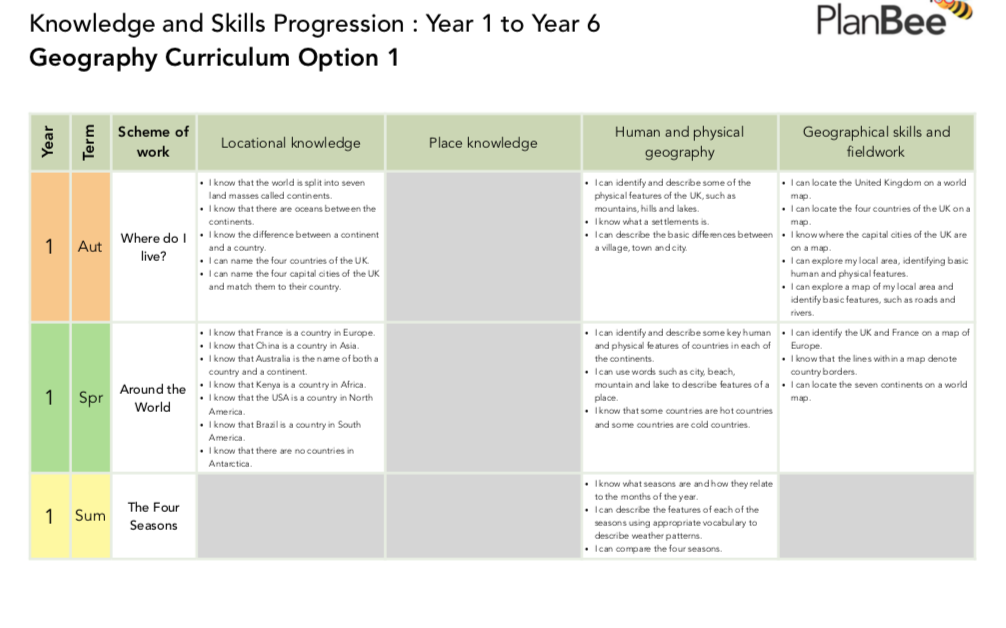
8. Equal Opportunities
At Assunnah Primary school, we are committed to providing a teaching environment which ensures all children are provided with the same learning opportunities regardless of social class, gender, culture, race, special educational need or disability. Teachers use a range of strategies to ensure inclusion and also to maintain a positive ethos where children demonstrate positive attitudes towards others.
Support for specific individuals is well considered and planned for, to ensure that tasks provide learners with an appropriate level of challenge.
9. Inclusion
All pupils are entitled to access the geography curriculum at a level appropriate to their needs.
To ensure inclusion, teachers use a range of strategies in line with the school’s inclusion planning key. Independent tasks, as well as teaching, are also well-adapted to ensure an appropriate level of challenge. The school makes full use of additional adults who are deployed effectively to ensure that identified children are able to make progress in each curriculum area, according to their full potential.
Enrichment opportunities are also fully utilised to ensure a fully inclusive and engaging geography curriculum. This is supported through several links with places of geographical interest in the immediate and wider locality which engage the children further through contextual and practical learning activities.
10. Parents
The involvement of families and the wider community, to help support the teaching of geography, is widely encouraged. Enquiries from Parents and members of the school community with specialist expertise and knowledge in relation to supporting the geography curriculum are warmly welcomed. The school will actively seek to establish collaboration with parents and carers who are able to support the teaching and learning of geography at Assunnah Primary
The support that Parents and carers provide in supporting their children at home with topicbased homework is also recognised and valued. When these are set, Geography homework tasks will be well communicated and have a clear purpose, often providing children with the means to consolidate or extend their classroom work.
![]() Knowledge and Skills Progression : Year 1 to Year 6 Geography Curriculum
Knowledge and Skills Progression : Year 1 to Year 6 Geography Curriculum
